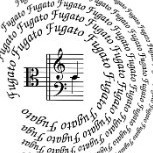Conventional glass or ceramic filters to protect your lens from falls?
-
Recently Browsing 0 members
- No registered users viewing this page.
-
Similar Content
-
- 27 replies
- 1,544 views
-
- 6 replies
- 350 views
-
- 1 reply
- 345 views
-
- 28 replies
- 2,663 views
-
- 39 replies
- 4,243 views
-





Recommended Posts
Join the conversation
You can post now and register later. If you have an account, sign in now to post with your account.
Note: Your post will require moderator approval before it will be visible.